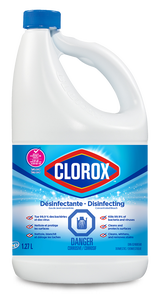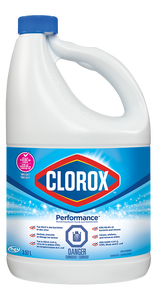Bleach Facts

How is bleach made?
Bleach production begins with salt and water. Electrolysis of the saltwater produces caustic and chlorine gas. When bubbled through the solution, chlorine gas reacts with caustic to produce the sodium hypochlorite active, NaOCl. This reaction of chlorine and sodium hydroxide (caustic) serves as both Clorox’s namesake and the foundation for creating dilute household liquid bleach products.
How does bleach work?
When you purchase a bottle of Clorox® Disinfecting Bleach you are buying a solution of sodium hypochlorite with a little sodium hydroxide and sodium carbonate to buffer the solution and help maintain product performance for up to a year. Sodium hypochlorite is a powerful chemical that can be used in a variety of ways. It quickly and effectively breaks down soils, allowing users to easily remove stains from surfaces and fibers. Bleach is beneficial for mankind as a disinfectant-sanitizer: it kills bacteria, viruses, mold and mildew, and limits the spread of pathogens such as SARS-CoV-2, MRSA, HIV, and H1N1.
Is bleach safe?
After use in household cleaning or laundry, sodium hypochlorite breaks down into 95–98% salt and water. The remaining 2–5% is easily removed by either sewage treatment or a septic tank. No liquid bleach enters the environment because it reacts with organic loads.
Clorox® Bleach is also used to treat drinking water. It can prevent the spread of cholera and other debilitating diseases when used as directed. Whenever there is a natural disaster, one of the first requests from the front line is for cases of Clorox® Bleach.
Products You Can Use
Advice From Our Experts
-
 How-To
How-To
-
 How-To
How-To


